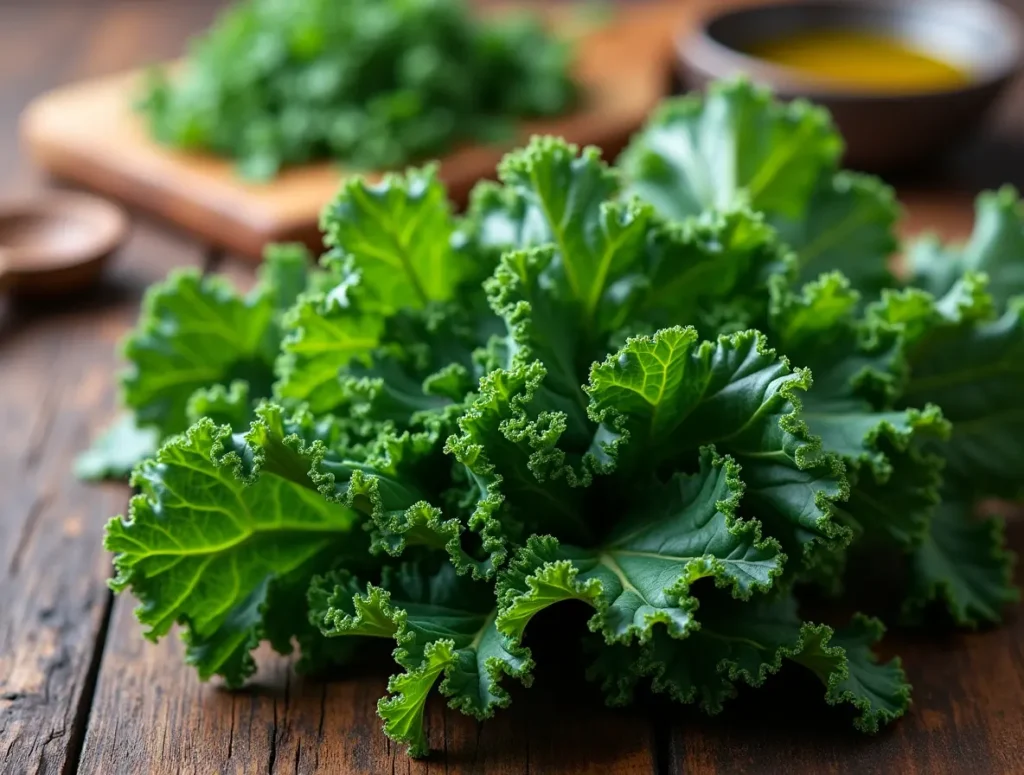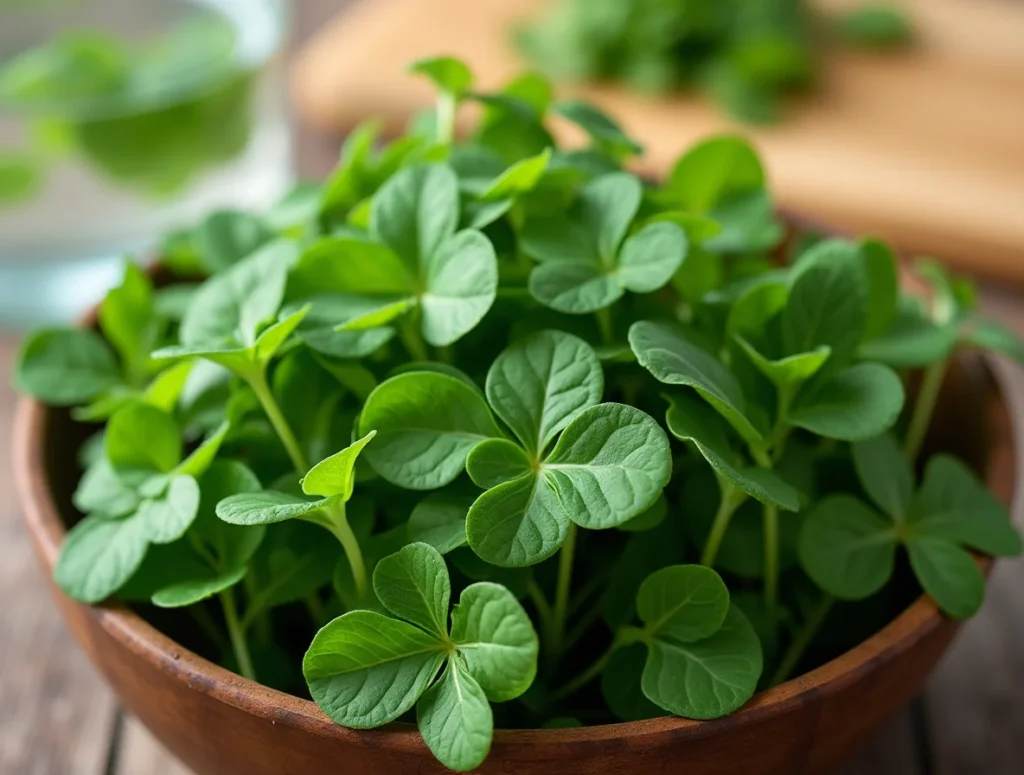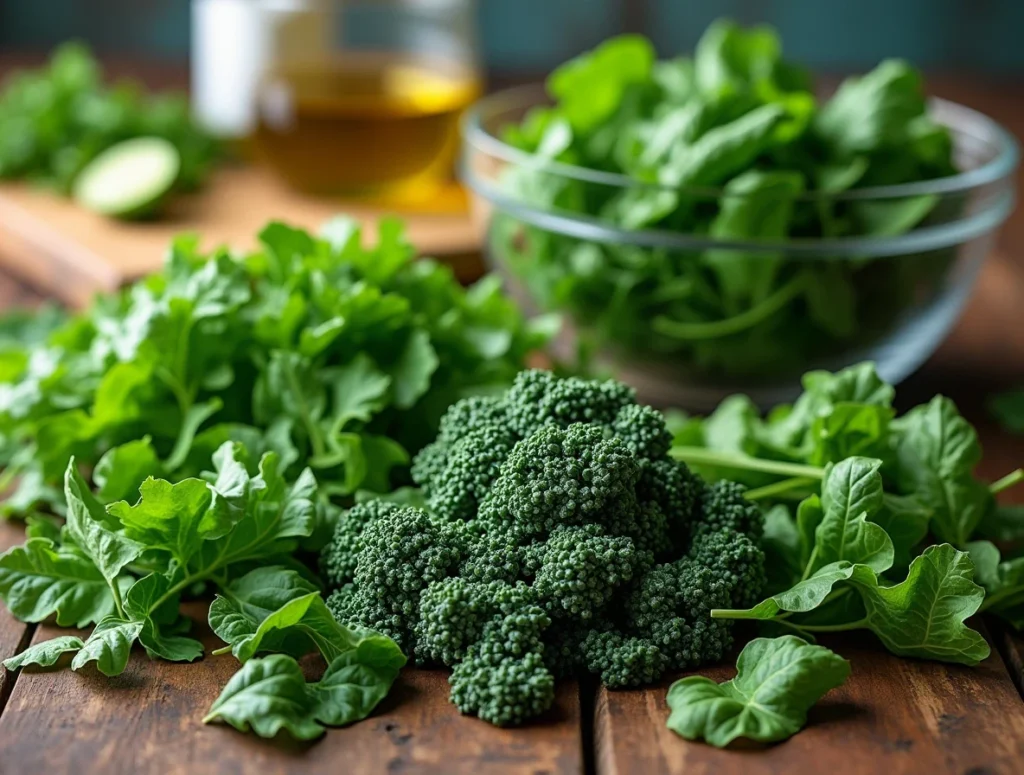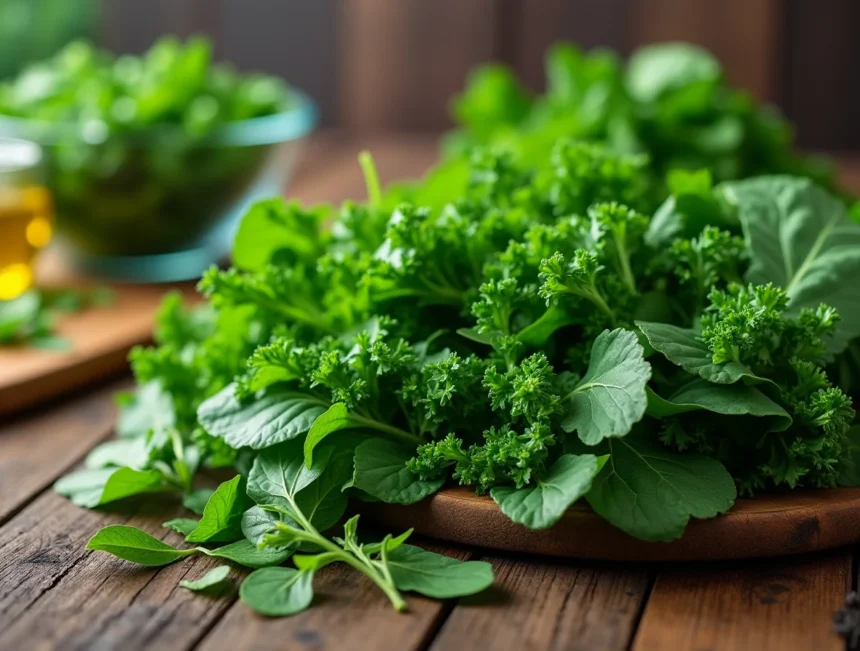Are you looking to transform your health with one simple dietary change? Leafy green vegetables might be your answer! These nutritional powerhouses pack an impressive punch of essential vitamins, minerals, antioxidants, and fiber that can revolutionize your wellbeing. Despite their incredible health benefits, studies show that only a small percentage of Americans consume the recommended daily amount of these vibrant greens.
What makes leafy green vegetables so special? From supporting immune function and promoting heart health to enhancing digestive wellness and fighting inflammation, these versatile foods offer benefits for virtually every body system. Whether you prefer the hearty crunch of kale, the peppery kick of arugula, or the mild flavor of spinach, there’s a leafy green vegetable to suit every palate and meal occasion.
Join us as we explore the 12 most nutritious leafy green vegetables that deserve a place on your plate. You’ll discover not just their impressive nutritional profiles, but also delicious ways to incorporate them into your daily meals!
1. Kale: The Crowned King of Leafy Green Vegetables

Kale has earned its reputation as perhaps the most famous leafy green vegetable, and for good reason. Unlike lettuce and spinach, kale belongs to the cruciferous vegetable family, giving it a unique nutritional edge.
Nutritional Profile of Kale
This leafy green vegetable superstar contains:
- Vitamins K, C, A, and B6
- Minerals including folate, manganese, and fiber
- Glucosinolates, sulfur-containing compounds that support immune function and healthy inflammatory processes
Glucosinolates also aid your body’s natural detoxification processes in the liver, helping eliminate harmful toxins more efficiently.
Best Ways to Enjoy Kale
While raw kale in salads is popular, there’s an even better way to unlock its nutritional potential. Try sautéing kale with a splash of olive oil, which helps break down the fibers, making nutrients more bioavailable while complementing its naturally bitter flavor. When prepared properly, kale may even help balance LDL (bad) cholesterol levels!
2. Brussels Sprouts: The Gateway to Cruciferous Leafy Greens
Though technically not a leaf but rather a cruciferous vegetable, Brussels sprouts deserve mention alongside other leafy green vegetables due to their impressive nutritional profile.
Why Brussels Sprouts Matter
These mini cabbage-like vegetables contain powerful antioxidants that help counteract cell damage. For those new to eating leafy green vegetables, Brussels sprouts provide an approachable entry point, especially when roasted until crispy.
Nutritional Benefits of These Compact Greens
A single cup of Brussels sprouts provides:
- High levels of vitamins A, C, and K
- Significant amounts of potassium and folate
- 3 grams of fiber, helping you feel satisfied after meals
- Antioxidants that support immune function, blood health, and bone strength
3. Spinach: The Versatile Leafy Green Champion

No discussion of leafy green vegetables would be complete without spinach. Available in several varieties including flat/smooth leaf, savoy (wrinkled), and semi-savoy, spinach offers remarkable nutritional versatility.
Spinach’s Impressive Nutrient Content
This leafy green vegetable contains:
- Vitamins K, A, C, E, and B2
- Calcium, potassium, manganese, zinc, and fiber
- An impressive 3g of protein per 100g serving, significantly higher than most other leafy greens
These nutrients support muscle mass, bone density, heart health, kidney function, and healthy inflammatory responses.
Raw vs. Cooked Leafy Spinach
The nutritional profile of this leafy green vegetable changes based on preparation:
- Raw spinach provides more vitamin C and folate
- Cooked spinach offers higher levels of vitamin A and iron
- One cup of cooked spinach contains over 800mg of potassium and 4g of fiber
4. Microgreens: Tiny Leafy Green Vegetables with Giant Nutrition
Don’t let their size fool you, microgreens pack a powerful nutritional punch. These underdeveloped greens of vegetables like kale, arugula, and broccoli are harvested just 1-2 weeks after planting.
Small Size, Big Benefits of These Young Greens
Research has found that several varieties of microgreens, including cabbage and cilantro, contain nutrient levels up to six times greater than those in mature plants! During early development, these young leafy green vegetables need a full arsenal of vitamins, minerals, and antioxidants to support growth.
How to Use Microgreens
With flavors ranging from peppery to tangy, these diminutive leafy green vegetables can enhance salads, soups, and sandwiches with both nutrition and flavor.
5. Swiss Chard: The Underrated Leafy Green Vegetable
This may be the healthiest leafy green you’re not eating. A relative of the beet family, Swiss chard tastes similar to spinach but offers a unique nutritional profile.
Swiss Chard Benefits
While it does have a higher sodium count than other leafy green vegetables (77g per cup), it also provides:
- More than double your daily requirement for vitamin K
- 12% of your daily requirement for vitamins A and C
How to Enjoy Swiss Chard
This leafy green vegetable has a distinct flavor that pairs beautifully with garlic and onions when sautéed. It also works well in quiches and frittatas, or mixed with other greens for a nutrient-diverse salad.
6. Mustard Greens: The Peppery Powerhouse Among Leafy Vegetables

As their name suggests, these are the lacy-edged leaves of the same plant that produces mustard seeds. Compared to other leafy green vegetables like kale or Swiss chard, mustard greens offer a more peppery, less bitter flavor.
Nutritional Highlights of Mustard Greens
Mustard greens:
- Rank second only to kale in beta-carotene content, which converts to vitamin A to support eye and bone health
- Contain glucosinates, powerful phytonutrients that activate detoxification enzymes
- Help protect liver and other organ cells from free radical damage
7. Arugula: The Calcium-Rich Leafy Green
With its distinctive peppery flavor, arugula has become a favorite among chefs and health enthusiasts alike. This leafy green vegetable offers unique benefits beyond its bold taste.
Why Arugula Stands Out Among Leafy Vegetables
Among leafy green vegetables, arugula:
- Provides one of the highest amounts of calcium, making it excellent for vegans, those with lactose intolerance, or anyone looking to boost bone health
- Contains high levels of natural nitrates, which your body converts to nitric oxide
- May enhance workout performance by increasing muscle blood flow and helping muscles work more efficiently during exercise
8. Spirulina: The Blue-Green Superfood
While not a traditional leafy vegetable, this nutritious algae deserves mention for its exceptional nutritional profile. Spirulina isn’t just for pretty turquoise smoothies, it’s one of the most impressive green foods for your diet.
Spirulina’s Remarkable Nutrition
In its powdered form, 100g of spirulina contains:
- 60-70% protein (depending on harvest location)
- Abundant vitamin A, K, and B vitamins
- Nearly 50% of women’s daily recommended calcium intake in a single serving
- Compounds that support healthy cholesterol levels
Studies show that this unique addition to the leafy green vegetable family can help support regular immune function.
9. Collard Greens: The Fiber-Rich Leafy Vegetable
This Southern favorite features large, leathery leaves with a mild flavor. While collard greens require longer cooking times than other leafy vegetables due to their tough texture, the nutritional payoff is worth it.
Health Benefits of Collard Greens
These leafy green vegetables provide:
- Ample vitamin K, C, and beta-carotene
- Higher amounts of dietary fiber than other leafy greens
- Heart-protective benefits (research shows women who consumed the most fiber had almost 25% lower risk of heart disease than those who ate the least)
10. Watercress: The Nutrient-Dense Leafy Green

Popular in Europe but often relegated to garnish status in the United States, watercress deserves recognition as a nutritional powerhouse among leafy green vegetables.
Watercress Benefits
Just one cup of this leafy green:
- Fulfills almost 75% of your daily vitamin K requirement
- Provides a good source of vitamin C
- Offers a refreshing peppery flavor that enlivens salads
Creative Uses for Watercress
Beyond salads, this versatile leafy green vegetable can be pureed into soups for an extra dose of flavor and nutrition.
11. Parsley: The Surprising Leafy Green Superfood
Though not technically lettuce, this leafy garnish that often decorates the side of your plate packs significant nutritional benefits.
Parsley’s Power as a Nutritional Green
This humble leafy green is:
- So nutrient-dense that even one sprig can help meet your daily vitamin K requirement
- Potentially helpful for appetite control (research suggests its strong aroma can create a sensory illusion of richness without adding fat or calories)
12. Broccoli: The Versatile Cruciferous Vegetable
While not a traditional leafy green, broccoli belongs to the cabbage family and offers exceptional nutritional value that warrants inclusion.
Broccoli’s Nutritional Profile
A single cup provides:
- 135% of recommended vitamin C
- 116% of recommended vitamin K
- Significant fiber, calcium, folate, and phosphorus
Of all vegetables in the cabbage family, broccoli contains the highest levels of sulforaphane, a plant compound that may improve gut bacteria, reduce cancer risk, and support heart health.
Conclusion

Incorporating leafy green vegetables into your daily diet is one of the most powerful steps you can take toward better health. From kale and spinach to arugula and microgreens, these nutrient powerhouses deliver essential vitamins, minerals, and antioxidants that support everything from immune function to heart health.
To complement the benefits of leafy green vegetables, consider adding sweet potatoes and blueberries to your diet. The antioxidants in blueberries pair perfectly with the immune-boosting properties of leafy greens, while sweet potatoes provide complementary nutrients like beta-carotene that enhance the overall benefits of a plant-rich diet.
Remember, the key to enjoying the full benefits of leafy green vegetables is variety, rotate different types throughout your week to experience their diverse flavors and nutritional profiles. Your body will thank you for it!
What’s your favorite leafy green vegetable, and how do you like to prepare it? Share in the comments below!

Want more health tips?
Want to save these health tips? Enter your email below and get more health tips delivered to your inbox weekly!




